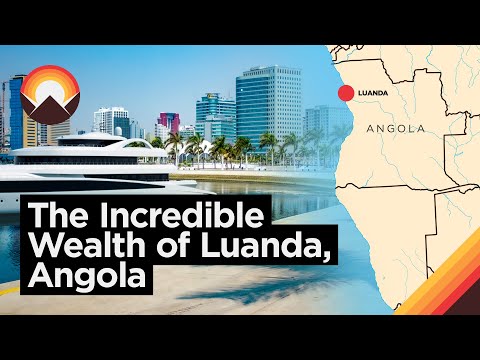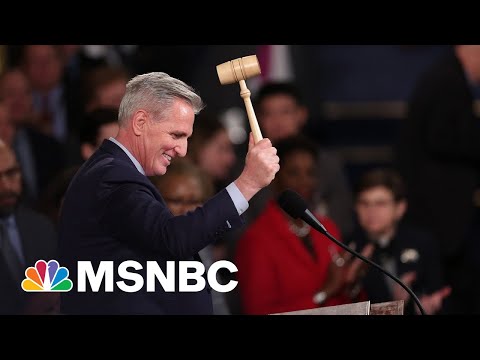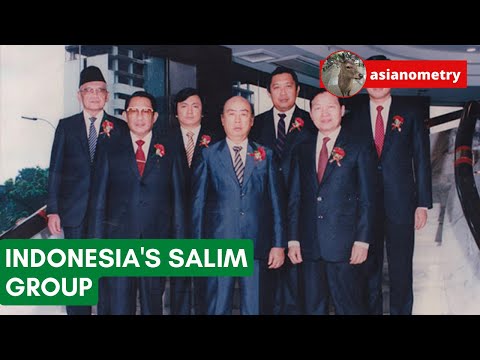How This Central African City Became the World’s Most Expensive

Sitting in the center of a maze of dirt roads, shantytowns, crumbling infrastructure, open sewers, and trash fires, central Luanda, circa 2015, was defined by opulence. Three times a week, a specially-configured 747 would speed 14-hours across the Atlantic from Houston, depositing up to 189 passengers at Angola’s international airport—an unusually low number for this aircraft, reflecting its unusually luxurious interior: 10 first class seats, 143 business, and just 36 in economy. The Houston Express, as it was dubbed, operated as a charter accessible only to invitees of Angola’s national oil company, the Sonangol Group, and for the convenience of a nonstop flight to or from America's oil capital, they charged an eye popping $2,399 for a roundtrip economy-class ticket—roughly equivalent to a half year of income for the average Angolan.
But these passengers were rarely Angolan. Rather, American oil executives, businesspeople, and their families filled the 189 seats—returning from a visit to their home offices or home towns. Having cleared customs, most would instruct their taxis to turn left, or south, towards their gated community of choice in the polished Talatona neighborhood. Inside these walls,
snaking streets dotted by Range Rovers, BMWs, and Porsche’s opened up to suburban style housing, featuring manicured lawns, backyard pools, tennis courts, backup generators, water treatment systems, and 24/7 security—an approximate impression of average American housing, offered for a far higher than average ten or twenty thousand American dollars a month. Come evening, Talatona residents might head to dinner at Cafe del Mar, Pimm’s, Oon Dah, or even the city’s yacht club—a walled enclave of luxury carved out of a landscape of tin-roofed shacks. Regardless of the restaurant of choice, one couldn’t escape for less than $100 a head. On a budget conscious night, one could head to KFC, but still, a meal there went for some $20 a person. Home cooking was also an option, but the comforts of home would cost you—a liter of Coke went for $10, while a pint of Haagen Dazs $17. While the adults of Talatona would typically commute into downtown Luanda to work in some of the most expensive office-space in the world, their kids would typically stay closer to home to attend the Luanda International School.
English-language, American-accredited, International Baccalaureate curriculum was taught by an international collection of teachers in a sprawling, modern, polished campus. Tuition averaged some $50,000 a year—equivalent to eleven Angolans’ average annual income—but it was often paid by the pupil’s parent’s employers as it was the only school in the city to regularly send graduates to Stanford, Columbia, and Oxford. The wealth of the Luanda elite was, simply put, extraordinary. And so too were the means by which Luanda got to this point. Until recently, Luanda was less a destination for the worldly elite, and more so a destination for deadly military ordnance. Entering the 1970s, even at the height of decolonization, it would’ve been hard to imagine Luanda as the capital of a single, sovereign Angola.
Entering this century, Luanda would’ve seemed one of the least likely of African capitals to have its downtown dotted with high-end hotels and its streets criss-crossed by BMWs and Porsches. The bloody, drawn-out process of Angolan independence began in earnest here, on January 4, 1961, where a protest over farm wages devolved into violence that spread across northern Angola before a brutal Portuguese response stopped the rebellion in its tracks. The months-long revolt signaled the upwelling of a nascent Angolan nationalism while its violent conclusion hinted at the uphill battle such a movement would face going forward. In the years that followed this first rural revolt, a series of independence movements took shape across Angola. The FNLA, the main combattant group in 1961, formed in the north and coalesced around a shared Bakongo ethnicity. Around Luanda came the MPLA, a Marxist-Leninist group made up largely of Angolan intelligentsia. And in central Angola was UNITA,
a group of FNLA dissidents who rallied around their Ovimbundu ethnic background. For the next decade, each group took on Portuguese military and Portuguese-funded paramilitaries. Because of such stark ideological and ethnic divides, though, each group did so individually—and each, in turn, failed. By 1974, Portuguese forces had pushed each of these factions to the very brink. Then, unexpectedly, Portugal itself fell in a military coup, and with the old regime went any interest in maintaining the nation’s African colonies. After 400 years, Angola’s colonial period was suddenly
coming to a close. The ethnic and ideological divides that had fragmented their independence movement, however, weren’t going anywhere. Forty years before it was known for the luxurious, oil-funded, Houston Express service, Luanda’s airport appeared in the media as a chaotic, miserably crowded departure point for some 200,000 Portuguese Angolans fleeing from an impending war. Just months later, on the eve of Angola’s official independence, the decision to leave proved prudent as the MPLA rushed the capitol, pushed the FNLA out of Luanda, and named the nation’s new president, Agostino Neto. It was the first major move of what’d be a decades long civil war. From the start, the war took on an international bent, as thousands of Cuban soldiers and two Yugoslavian war ships bolstered the Marxist-Leninsts’ hold over the capitol while South Africa, Zaire, and—through covert funding—the US all backed the now allied FNLA and UNITA. A hot spot in the Cold War, Angolan territory flipped between UNITA and MPLA forces
practically every battle, every offensive, and every year, as aid from various world powers bolstered both party’s ability to keep fighting. Between the occasional ceasefire or failed negotiation, the war carried through the 70s and 80s. Without either side able to claim a decisive victory, it stretched into the 90s. As the Cold War closed, Angola’s civil war lost
its ideological edge and international appeal. Angola’s president, José Eduardo dos Santos, who had led the MPLA government since Neto’s death in 1979, liberalized much of the Angolan economy, while UNITA carried on without money from the West, instead funding their war efforts through the diamond trade. In 2002, with the assassination of it’s longtime leader, with increasingly tight sanctions on its diamond trade, and without a real cause to fight for, UNITA entered peace talks. After nearly 30 years, the Angolan Civil War came sputtering to a close, accomplishing remarkably little. The same party remained in power, the same president remained in office, while a third of the nation’s population had now been internally displaced, two thirds didn’t have access to running water, and life expectancy hovered in the 40s.
Late to gain its independence, and mired by three decades of ruthless civil war, 21st-century Angola was desperately behind. Now, for as long as Angola has been a country, it’s been an oil economy. In fact, by the time the civil war ended, Angola was nearing its hundredth anniversary of commercial oil production. Even during the war, as landmines littered the countryside and deadly violence occurred daily, international oil giants like Shell and Chevron braved the conditions on account of the profit opportunity Angola afforded. Onshore oil fields were frequently attacked and destroyed, but much of the country’s oil was located offshore—beneath hundreds or thousands of feet of ocean. So, focus gravitated offshore, where the liquid gold could be extracted in relative safety throughout the conflict. Ironically, however, the oil industry itself prolonged their biggest obstacle to
increased production as they funded the MPLA’s war machine through the drilling fees they paid them. But, when the war finally ended, when peace was found, that obstacle was removed—without the civil war necessitating burdensome security contractors and expensive hardship wages, oil production in Angola immediately grew far cheaper and far easier. Profiteers the world over jumped on the opportunity. Sonangol and its international partners planned for new rigs and expanded operations, which came at the perfect time as the West, and especially America, looked to distance itself from Middle-Eastern oil in the wake of 9/11. President Dos Santos was even invited by Bush to the Oval Office to discuss that very subject. Meanwhile, on the other side of the
world, China also identified the opportunity: just months after the war officially ended, it signed a $2 billion loan agreement with Angola, using its future oil production as collateral—positioning the country in a strategic tug-of-war between two of the world’s great powers. Within three short years, the post-war economy was kicking into high gear. 2005’s oil production figures were already double those of the civil war era, and the country recorded its highest GDP jump in history—the economy expanded some 15% in just twelve months. Soon after, Angola overtook Saudi Arabia to become China’s largest oil provider, while the country’s first shopping mall opened in the center of the quickly developing, upscale Talatona neighborhood. Angola’s position as a new oil giant was solidified as it joined the Organization of the Petroleum Exporting Countries—a global price-fixing cartel including Iraq, Saudi Arabia, the UAE, and others.
By the 2010s, Luanda’s skyline had been thoroughly transformed—glass-fronted skyscrapers stretched hundreds of feet into the sky, filled with modern apartments selling for millions or tens of millions of dollars. Five-star hotels now offered visiting executives accommodations on par with those in Houston, Calgary, Abu Dhabi, or the other oil capitals of the world. Even the global financial crisis barely shook Luanda from its path—as the global economy shrank, Angola’s still eked out growth. It was one of the fastest growing, fastest developing, fastest changing countries in the world—others had experienced oil booms, but none went from civil war to helipad-laden $10 million penthouse apartments in less than a decade. Some asked if Luanda was on track to become the Dubai of Africa—a place that,
just a few more years into the future, would have Lamborghinis on every block, 5-star hotels from every international brand, and Michelin-starred restaurants from all the globe’s best chefs. Others, however, started asking a different question: what had this boom done for everyone else? Excluding the expats and oil executives and politicians and businesspeople, how had life changed for the everyday Angolan—the other 99.5% of the country? Well, between 2002 and 2010, Angola’s economy grew 534%, but, of course, GDP is not a useful metric for assessing the quality of life of the everyday person. What is is the human development index, which combines metrics related to health, education, and standard of living into a composite score—Angola’s in 2002 was 0.426 out of 1. By 2010 it was 0.517—it had jumped more than 20%, but so did the rest of the world’s. Looking relatively, Angola ranked 154th in the world for HDI in 2002. In 2010, it ranked higher… by four places. That’s to say, the economy was now $66 billion larger,
but somehow, the everyday Angolan was doing just about the same. This was baffling, and an embarrassment for the country’s triumphant leadership. When the United Nations Development Programme released data indicating that just 19% of men and 15% of women in the country attained high-school level education, the government disputed the figures—saying the UN had an incorrect methodology. But the embarrassments kept stacking—the facade started to fall. 2010 was supposed to be a watershed year for Angola as it hosted the Africa Cup of Nations—the third largest soccer tournament in existence. It was supposed to be the clearest indication yet that Angola was safe, developed, and open to the world, but in the days leading up to its start, as Togo’s national team traveled to their opening match, separatists gunned down their bus as it passed through Cabinda, killing three of their traveling party. This incident cast a dark
shadow on the typically jubilant tournament, and was positioned in international media as an indicator that, despite all the pomp and circumstance of the new Luanda, deep down, Angola was still the same underdeveloped, impoverished, violent country of a decade before. For a decade, the success stories drowned out failures, but failures began to mount, and as they did, they became harder to ignore. 2012 brought coverage of what was believed to be the most expensive apartment sale on the African continent to date in Luanda. But acknowledging the difficulty the real-estate boom presented to housing everyone else, Dos Santos had promised in his 2008 presidential campaign to build a million homes by 2012. In 2012, however, even the pared down post-election version of this promise faltered. The first 2,800 apartments went
up for sale in the brand-new Kilamba neighborhood, which would eventually have capacity for 200,000 working-class residents. But six months in, just 220 of those homes had been sold due to the fact that the very working-class residents they were built for couldn’t afford or finance them. But the next year, Angola was celebrated the world over as Isabel dos Santos, the president’s daughter, became the first African woman ever to make the Forbes billionaires list, with an estimated net worth north of $3 billion. It wasn’t South Africa or Nigeria or any of the continent’s other traditional centers of wealth to earn this honor, but rather tiny, scrappy Angola.
Dos Santos owned significant stakes in banks, media companies, and cell providers in Angola and Portugal; a home on the private island of the exclusive Bulgari Resort in Dubai; a $16 million home in the affluent Kensington neighborhood of London; a comparatively modest $1.8 million penthouse apartment in Lisbon; a $55 million Villa just steps away from the Casino de Monte Carlo in Monaco; and to go with it, a $35 million, 50 meter, 164 foot yacht anchored in the Mediterranean below. And in 2016, her fortunes, both literal and figurative, only increased as her father fired their entire board of Sonangol, Angola’s national oil company, and replaced it with a sole chairwoman: Isabel dos Santos herself. She was now in charge of the most powerful company in the country, making her perhaps the country’s second most powerful person after her father himself. However, just months earlier, he had announced his imminent retirement—Jose Eduardo dos Santos would pass the torch and Angola would have a new President, for the first time in thirty-eight years. The President and his party planned for
longtime MPLA politician, João Lourenço, to take the reins, which he did on September 26, 2017. But then things went less to plan. Isabel dos Santos was quickly fired from her leading position at Sonangol, while her half-brother, who had been leading the country’s sovereign wealth fund, was arrested on corruption and money laundering charges. Out of nowhere, João Lourenço turned on the Dos Santos family, and asked the question no powerful MPLA leader had ever dared: was it merely a coincidence that Africa’s wealthiest woman was the daughter of Angola’s most powerful man, or was something more nefarious going on? Quietly, this question had been circling around the international business community for years, and by the mid 2010s, some were formulating informed opinions. Western banks like Citigroup and Barclays backed out of deals with the business woman, Intertrust and ING closed accounts linked to her and her husband, and Sonangol officials railed against dos Santos’ alleged mismanagement of funds. For her part, dos Santos pushed back—arguing that claims of illegality were unfounded, and that the banks had anti-African biases. Then, in 2020, as rumors swirled, accusations mounted,
and investigations dug deeper, the world was offered its clearest view yet into dos Santos’ business dealings through a landslide of private documents called the Luanda Leaks. Captured by a notorious Portuguese whistleblower, passed to the Paris-based Platform to Protect Whistleblowers in Africa, then analyzed and disseminated by the International Consortium of Investigative Journalists, the 715,000 leaked memos, emails, contracts, and meeting minutes corroborated many of the suspicions and outright accusations lobbed at the former president’s daughter. At practically every turn in her empire-building career, the documents showed, Isabel dos Santos benefitted from insider deal-making that landed her one massive government contract after the next. In 1999, there was the brand-new mobile phone company Unitel, of which she owned a 25% share, being granted a valuable telecoms license by the government. In 2015, there was the Isabel dos Santos-led urban redevelopment project being greenlit by presidential decree that—the leaked documents later showed—was drafted by her own lawyers. At every opportunity, major government undertakings seemingly designed to help everyday Angolans were being routed through various Isabel dos Santos holdings. Beyond the murky, uncompetitive doling out of
government contracts, dos Santos and her husband Sindika Dokolo further boosted their own wealth through fraudulent deals and creative accounting which, in turn, further stunted the development of the Angolan economy. In addition to the $1 billion in dividends dos Santos made and the $1 billion stake she still owned in Unitel, now the nation’s largest telecom provider, dos Santos also went ahead and set up another company called Unitel International Holdings, which she lent upwards of $460 million from Unitel—signing off as both the lender and the borrower and leaving the Unitel board utterly dumbfounded. The money made from shady insider deals like this then went on to cycle through or open a vast array of shell companies in places like the British Virgin Islands and Malta where tax burdens and government oversight would be low or nonexistent. This international expansion, the leaks would prove, explained why companies like Malta’s Wise Intelligence Solutions, with herself and her husband as sole shareholders and only a handful of staff with no expertise in oil, were being awarded contracts to restructure a floundering Sonangol in 2015. All told, the ICIJ analysis of the Luanda Leaks
claimed that the dos Santos and Dokolo empire was made up of more than 400 companies and subsidiaries spanning 41 countries with at least 94 stashed in secrecy jurisdictions like Malta. By painstakingly pouring over the 70 thousand documents, journalists helped to substantiate what skeptical onlookers had been claiming since 2013—that the dos Santos empire was hardly something to be celebrated. Rather than a signal that Angola was on the rise, Isabel dos Santos’s ill-gotten wealth was actually going a long way in keeping average Angolans down.
In late 2020, president Lourenço claimed that the government of Jose Eduardo dos Santos had squandered away and outright stolen an estimated $24 billion dollars of the Angolan government, and therefore the Angolan peoples’, money. Angola’s story is tragically unoriginal—an African country that strikes it rich with natural resources, but where poverty and pain persist for all but the powerful few. Equatorial Guinea, the Central African Republic, Zambia—the same narrative plays out time and time again across the continent, crippling the people’s futures. This natural-wealth/economic-poverty paradox is so common in development economics
that it has a name, the resource curse, and while this continent propagates the phenomenon, it’s observed globally. Simply: natural resources rarely propel people out of poverty. But today there’s the benefit of hindsight. Corruption and cronyism is now identifiably the evil holding the people back, so as dictators die out, democracies across Africa have the opportunity to try something new. On August 24th, 2022, Angolans will head to their polling places to decide whether João Lourenço and his MPLA party will earn a second term, or if UNITA, for the first time ever, will take control of the country. Encouragingly, both parties' campaigns
are centered around defeating corruption—while one candidate points to his past action investigating and punishing his predecessors, the other says he didn’t go far enough and is charting out a path for more systematic reform. Angola has a long way to go and is starting from behind, but the oil’s still there—it’s still producing millions of barrels per day, and billions are still left in the ground. If the people can accurately predict which candidate will stick to their word, which candidate will find a path to turn natural wealth into human wealth, then all is not lost for Angola—it still has a chance of breaking the resource curse. If you’re anything like me, you probably spend an embarrassing amount of time scrolling through streaming sites trying to find something good to watch. Well, to stop you from doing that tonight, I’ve assembled a list of a whole evening’s worth of entertainment that any Wendover viewer is sure to enjoy. To start out with, there’s the first episode of our new season of Extremities, which does a deep dive into why the US holds onto the tiny mid-Pacific territory of Wake Island through first-hand interviews with those who have lived and worked there. A small hint:
it has a whole lot to do with airplanes. Next, you should give the latest episode of Polymatter’s series China, Actually, a watch, where he explains how the country manages to survive and thrive with essentially zero major international allies. Finally, you should watch Half as Interesting’s Crime Spree—the pilot season of our travel-competition show Jet Lag, where my writers chase me across the country as I attempt to complete challenges as I go.
Each of these, and so much more, is exclusive to either Nebula or CuriosityStream—two fantastic streaming sites. The first was founded by myself and a bunch of other educational creators to be the best home to the stuff we make, allowing us to make higher-budget, more controversial, more unique, or other sorts of videos that just don’t work on YouTube. Meanwhile, CuriosityStream was founded by the same people as Discovery Channel, and hosts all sorts of fantastic STEM-oriented documentaries and shows, including our series, Extremities. And what’s great about these two sites is you don’t have to choose. What’s less expensive than signing up for either of them is signing up for their bundle deal, where, if you head to CuriosityStream.com/Wendover, you’ll not only get a 26% discount on an annual plan, they’ll also throw the Nebula subscription in for free, for as long as you’re a CuriosityStream subscriber. That means that you’ll get
both streaming sites for just $14.79 a year, and you’ll be supporting Wendover and loads of other independent creators, so head over to CuriosityStream.com/Wendover to sign up today.
2022-08-25 10:32


